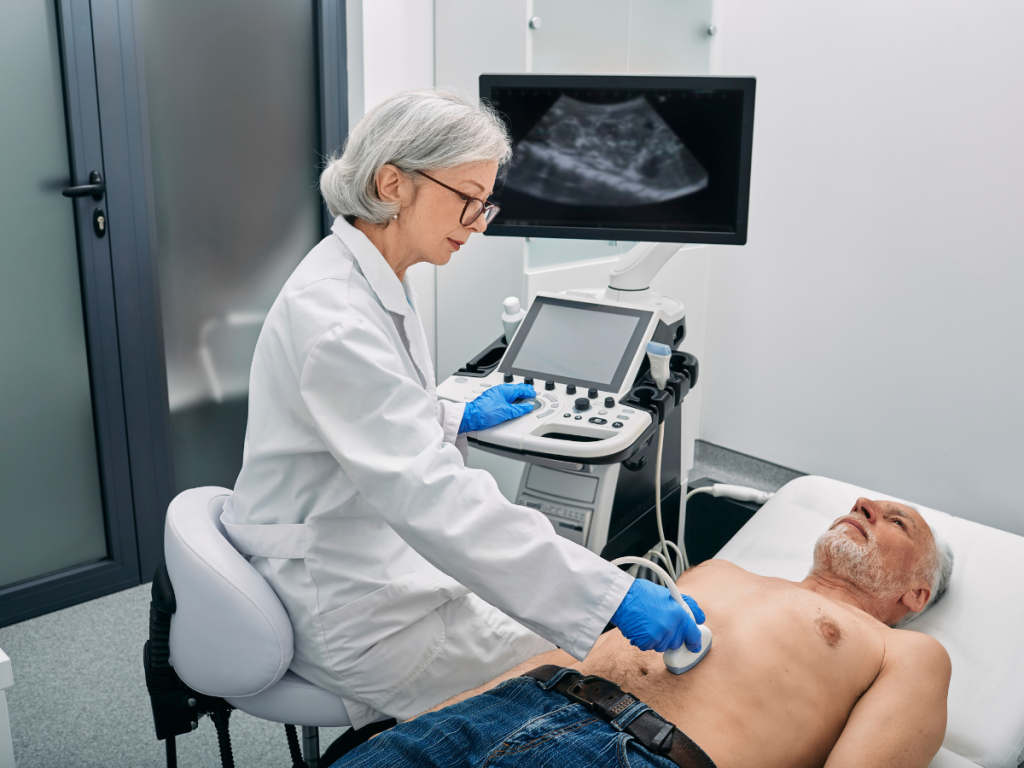Abdominal ultrasounds are a commonly used diagnostic tool in the medical field. They provide valuable insights into the internal organs and tissues of the abdomen, aiding in the detection and diagnosis of various conditions. In this article, we will delve into some frequently asked questions about abdominal ultrasounds, shedding light on the procedure, its uses, and what to expect during the examination.
-
What is an abdominal ultrasound? An abdominal ultrasound, also known as a sonogram, utilizes sound waves to create images of the organs and tissues within the abdomen. It is a non-invasive procedure that helps physicians evaluate the condition of organs such as the liver, gallbladder, kidneys, pancreas, and spleen. This diagnostic tool provides valuable information for diagnosing diseases, monitoring treatment progress, and guiding therapeutic interventions.
-
How is an abdominal ultrasound performed? During an abdominal ultrasound, a trained technician or radiologist applies a gel-like substance on the abdomen and uses a handheld device called a transducer to emit sound waves. These sound waves bounce off the organs and tissues and create images that are displayed on a monitor. The process is painless and typically takes about 30 minutes to complete.
-
What are the benefits of an abdominal ultrasound? Abdominal ultrasounds offer numerous advantages over other imaging techniques. Firstly, they do not involve ionizing radiation, making them safe for repeated use, especially in pregnant women and children. Secondly, they provide real-time imaging, allowing the healthcare provider to visualize organ movements and blood flow. Additionally, they can detect abnormalities such as tumors, cysts, or gallstones, aiding in early diagnosis and prompt treatment.
-
What conditions can an abdominal ultrasound detect? Abdominal ultrasounds are instrumental in diagnosing a range of conditions. They can identify liver diseases, such as cirrhosis or fatty liver. Gallbladder-related problems, including gallstones and inflammation, can also be detected. Kidney stones, tumors, or abnormalities in the urinary tract are commonly diagnosed using ultrasound. Pancreatic disorders, such as pancreatitis or tumors, can also be visualized. Furthermore, abdominal ultrasounds assist in evaluating the spleen, blood vessels, and other abdominal structures.
-
How should one prepare for an abdominal ultrasound? Preparation for an abdominal ultrasound is generally simple. It usually involves fasting for several hours prior to the exam, as a full stomach can interfere with the image quality. Your healthcare provider will provide specific instructions, such as avoiding gas-forming foods and drinks. It is advisable to wear loose-fitting clothing to facilitate easy access to the abdomen during the procedure.
-
Are there any risks or limitations associated with abdominal ultrasounds? Abdominal ultrasounds are considered safe and do not have any known risks or side effects. Unlike other imaging methods, such as CT scans or X-rays, ultrasounds do not expose patients to ionizing radiation. However, it is essential to note that while ultrasounds can provide valuable information, they may not be able to visualize certain structures as clearly as other imaging techniques, such as magnetic resonance imaging (MRI) or computed tomography (CT).
-
Conclusion: Abdominal ultrasounds are indispensable tools in the medical field. They help physicians diagnose and monitor a wide range of conditions without exposing patients to ionizing radiation. By providing real-time images and valuable insights into the health of abdominal organs, ultrasounds aid in prompt treatment and improved patient outcomes. If you have any further questions or concerns about abdominal ultrasounds, please leave a comment below. Don’t forget to share this article with your friends and family who may find it helpful.
Keywords:
- Abdominal ultrasound
- Sonogram
- Non-invasive procedure
- Organ imaging
- Diagnosing diseases
Keywords:
- Abdominal Ultrasound: Exploring Uses and Benefits
- A Guide to Abdominal Ultrasounds: What You Need to Know
- Understanding Abdominal Ultrasound: Your Questions Answered
- Abdominal Ultrasound vs. Other Imaging Techniques: A Comparison
- The Power of Abdominal Ultrasounds: Revealing Hidden Disorders

